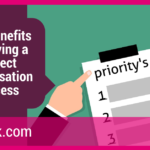The MOCHA project management framework is increasingly popular. It offers the chance to clarify roles and responsibilities, and it’s incredibly adaptable. However, before deciding that this is the right option for your needs, it’s essential to compare the benefits and drawbacks. MOCHA can empower your people and energize a project, but it may not be the right fit for your needs.
The Benefits of the MOCHA Project Management Framework
The MOCHA project management framework offers a wide range of benefits. Some of the most important include the following:
1. Clarity in Roles and Responsibilities – Perhaps the single most common reason to adopt the MOCHA framework is a need for clarity when it comes to roles and responsibilities. This can offer several additional benefits. For instance, it helps prevent any one person from being overloaded with responsibilities or wearing “too many hats” regarding the project. It also helps balance the dispersal of responsibilities across the entire team so that everyone has the right amount of work and understands the expectations placed on them.
2. Enhanced Communication and Collaboration – With more precise roles and responsibilities come better-defined communication channels. When every project team member knows their role and what’s expected of them, communication is clear and easy. Collaboration between team members becomes natural. Confusion and uncertainty fade away.
3. Consistent Progress and Enhanced Success – How many times have you been part of a project only to find that it progresses in fits and starts? A lot of that inconsistency is due to poor clarity when it comes to roles and responsibilities. As team members struggle to find where they fit within the project and understand what’s expected of them, the project moves at a crawl. With the MOCHA framework, that’s not the case. You have clarity from day one so the team can hit the ground running, providing consistent progress toward a successful conclusion.
4. Resolve Issues Quickly – Anyone who’s been part of a project for any amount of time can tell you that issues can linger, dragging down the team, slowing progress, and derailing success. With MOCHA, there’s little conflict because the roles and responsibilities are clearly defined and delegated. That doesn’t mean there is no conflict at all, but issues can be resolved expediently, with a minimum of fuss and hassle.
The Drawbacks of the MOCHA Project Management Framework
While MOCHA offers quite a few important benefits, you must be familiar with the handful of drawbacks here, too.
1. It’s Not a Project Management Methodology – Perhaps the most important drawback is that MOCHA is a project framework, not a project management methodology. That means you’ll still need to choose the right management method for your needs, from waterfall to Agile, Kanban, Scrum, and everything in between.
2. It Doesn’t Help You Make Decisions – Another issue is that MOCHA is not a decision-making tool. It’s focused on project planning and team empowerment. By clarifying and defining roles and responsibilities, MOCHA can help set your project up for success, but you’ll still need to bring other tools to bear.
3. It’s Not RACI – While you’ll find many similarities between MOCHA and RACI, they’re not the same, nor are they interchangeable. Some projects will benefit from RACI rather than MOCHA, and vice versa. It’s up to you to decide which is true for your project.
In Conclusion
The MOCHA project management framework offers some very intriguing benefits. However, it’s not without its drawbacks. It can reduce conflict, accelerate progress, and improve project success, but the framework isn’t right for every project, and it doesn’t help with decision-making.






